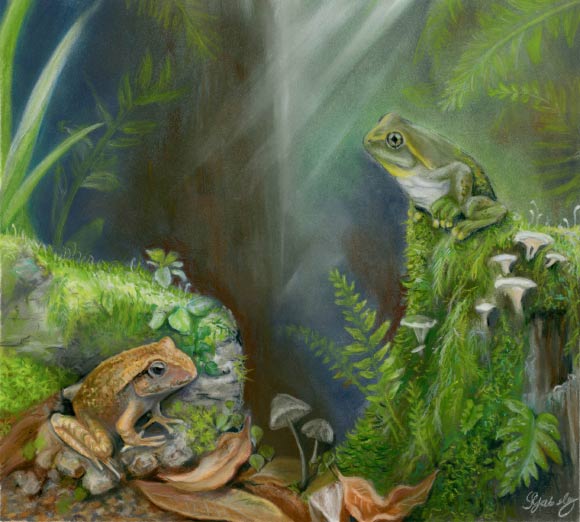The discovery of Litoria tylerantiqua suggests that Australian treefrogs (pelodryadids) were present in Australia by the Early Eocene, when the continent was still connected to Antarctica and South America as the last remnants of the supercontinent Gondwana.

Litoria tylerantiqua lived in Australia during the Early Eocene epoch, approximately 55 million years ago.
The frog’s fossil bones were collected in the 1990s by University of New South Wales paleontologists by screen-washing clay samples from the Tingamarra fossil frog deposit in Murgon, Queensland.
“Around 55 million years ago, Australia, Antarctica and South America were linked together as the last remnants of Gondwana,” said Dr. Roy Farman, a researcher at the University of New South Wales and the Australian National University, and colleagues.
“Global climates were warmer during this period, while a forested corridor linked South America and Australia.”
“Up until now, it was thought the earliest Australian tree frogs came from the Late Oligocene (about 26 million years ago) and the Early Miocene (23 million years ago).”
“Fossils of the Late Oligocene were found at Kangaroo Well in the Northern Territory and Etadunna Formation at Lake Palankarinna, South Australia, while the Riversleigh World Heritage Area in Queensland revealed tree frogs from the Early Miocene.”
“But the new species extends the fossil record of pelodryadids by approximately 30 million years, to a time potentially close to the divergence of Australian tree frogs from the South American tree frogs,” they said.
“Previous estimates based on molecular clock studies suggested that Australian and South American tree frogs separated from each other at about 33 million years ago.”
Litoria tylerantiqua joins the only other Murgon frog, the ground-dwelling Platyplectrum casca (previously described as Lechriodus casca), as the oldest frogs known from Australia.
Both have living relatives in Australia and New Guinea…
Read the full article here
